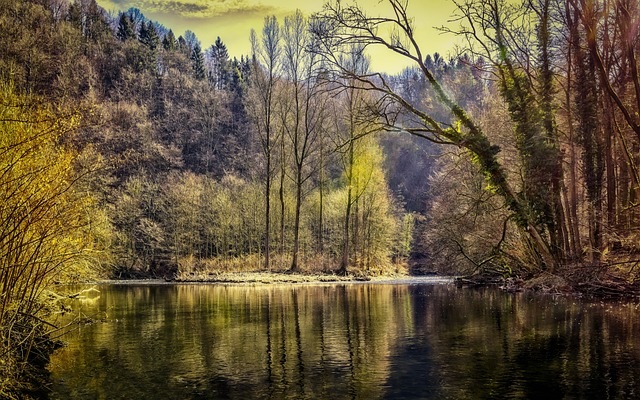Maryland Conservation Buffer Initiative
The Maryland’s Conservation Buffer Initiative provides farmers with attractive incentive payments to plant streamside buffers on farmland to improve the health of local streams and the Chesapeake Bay.
Sign up starts at the beginning of the year and runs until March. For 2024, the enrollment period is January 29 through March 8.
Additional Incentives
- A one-time bonus payment of $1,000 per acre to install forest buffers.
- Up to $330/acre/year to help cover costs associated with maintaining forest buffer viability and health for the first 5 years of the contract.

Program Highlights
Three types of buffers are eligible for funding and free technical assistance from local soil conservation districts under this program: forest buffers planted next to waterways, grass buffers planted next to waterways or field ditches, and watercourse access control areas adjacent to pastures. Here’s how the program works:
- Payment rates range from $500/acre for an existing grass buffer to a maximum of $4,500/acre to install a riparian forest buffer with pasture fencing.
- Mowing and hay harvesting are allowed; nutrient applications are not.
- An extra one-time bonus payment is offered for enrolled forest buffers.
- Annual maintenance payments are available for forest buffers during the first five years.
- Contracts are for 5 or 10 years.
- Soil conservation districts provide free technical assistance to get your buffer installed.
- All work must be completed by June 30, 2025
Choose Buffer
Qualifying Land
- Cropland next to a stream or ditch that has an established cropping history in pasture, commodity crops or hay
- Areas adjacent to watercourses with highly erodible or hydric soils, as determined by the local soil conservation district.
- Field ditches are not eligible to establish woody conservation buffers.
- Existing buffers or agricultural lands that are actively enrolled in state (MACS) or federal programs (CRP, CREP, EQIP, etc.) or mandated by an easement are not eligible for this program.

Eligibility
- Farmers and landowners who are responsible for the management of eligible lands may apply.
- Farmers who lease land must certify an active lease for the term of the buffer, or provide an agreement from the landowner.
- Farmers and landowners must be in good standing with USDA and state cost-share programs.
- A current Nutrient Management Plan Certification is required and must be submitted with the application.
- Additional restrictions may apply.
How to Apply
- Download the application, fill out and print and bring to our office at Garrett Soil Conservation District, 1916 Maryland Hwy, Ste C, Mt Lake Park, MD 21550. Or, you can just come to the office and we will help you fill out the application.
- You will need to bring the following:
- A map that shows the location and acreage of the buffer. (We can help you with this if you need help.)
- A signed Nutrient Management Plan Certification Form. (See link to the right). For help finding someone to help you complete a Nutrient Management Plan contact the Extension Office at 301-334-6960. Let them know that you are signing up for a program with Soil Conservation District.
- Questions? Contact us at 301-501-5886 or seth.metheny1@maryland.gov.
Funding for Maryland’s Conservation Buffer Initiative is provided by the Chesapeake and Atlantic Coastal Bays Trust Fund and the Environmental Protection Agency.